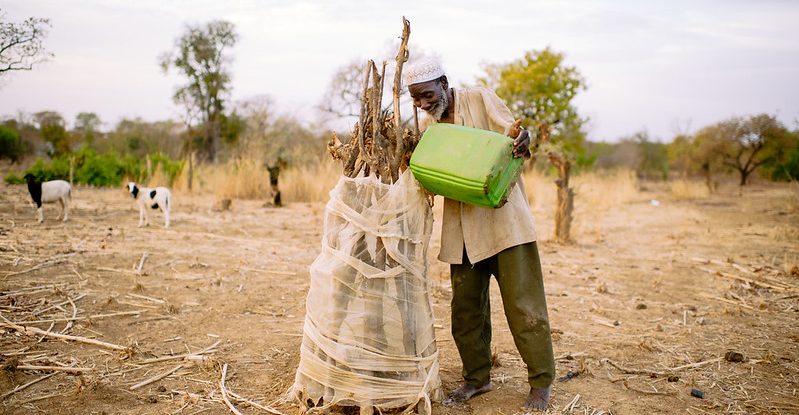Many natural landscapes are at the point of no return, and without action on climate change the planet will become unliveable.
The latest major report from the Intergovernmental Panel on Climate Change (IPCC) presents a stark vision of the future if concerted action is not taken to hold global warming in check.
“Climate change is upon us,” said Robert Nasi, managing director of the Center for International Forestry Research and World Agroforestry. “This is not a risk anymore, but a reality and mitigation won’t suffice. The message is clear — we must now place our focus on putting adaptation plans in place to protect ecosystems and the most vulnerable communities.”
Climate-related threats to species and ecosystems – including forests and agroforestry landscapes – particularly in areas of concentrated biodiversity, present a global risk that grows with every tenth of a degree increase of warming.
The potential for resilience will become increasingly limited if the global community does not take urgent action and greenhouse gas emissions do not decline quickly, particularly if global warming of 1.5 degrees C above pre-industrial levels is surpassed, the report says.
Although it is still possible to adapt to new climate conditions, if global warming overshoots 1.5 degrees C, the risks to many human and natural systems will increase, and some will be impossible to reverse. At 2 degrees C, food crops will be difficult to grow in many areas, the report cautions.
“Global emissions are set to increase almost 14 percent over the current decade,” said U.N. Secretary General Antonio Guterres at the launch of the report. “That spells catastrophe. It will destroy any chance of keeping 1.5 alive.”
Missing the Paris Agreement mitigation strategy to limit post-industrial warming to well below 2 degrees Celsius and limit it to 1.5 degrees Celsius is due in large measure to unchecked planet-warming carbon emissions, which have continued to spiral upward.
Forged originally at U.N. climate talks in 2015, the agreement was the focus of intense discussion by leaders at COP26 in Glasgow in November, who made a pact to halt and reverse forest loss and land degradation by 2030.
To achieve 1.5, emissions must be cut by 45 percent by 2030 and net zero emissions must be achieved by 2050, but under current commitments, global emissions are set to increase almost 14 per cent over the current decade, Guterres said.
Risks of zoonotic diseases will likely increase the risk of such virulent diseases as SARS, MERS and SARS-CoV-2. As the rate of reproduction and distribution of weeds, insect pests, pathogens and disease vectors changes, pressures on crops, forests and livestock will increase.
Adaptation and mitigation strategies can build climate resilience, but their success is dependent on socially inclusive actions of governments, the private sector and civil society to prioritize risk reduction, equity and justice, the report says.
Unique ecosystems face risks from global warming due to mass tree mortality and permanent damage caused by heatwaves to other ecosystems.
Human-generated climate change has already caused species loss and extinctions, higher rates of disease and mass death of plants and animals. It has also led to more deforestation, degradation and doubled burned areas due to a growing number and intensity of wildfires.
Wildfires generate up to a third of global ecosystem carbon emissions, and the risk of fires increases with global temperature.
Deforestation, draining and burning of peatlands and tropical forests, thawing of Arctic permafrost have already transformed some areas from carbon-sinks to carbon sources, the report says.
Woody plant expansion into grasslands and savannas, linked to higher carbon dioxide levels, has reduced grazing land for livestock, while invasive grasses in semi-arid land have increased the risk of fire. Coastal “blue carbon” systems are also changing, the report says.
Natural disasters such as droughts, heatwaves and floods, lead to reduced food availability and higher food prices, threatening nutrition, health and livelihoods of millions of people. Extreme events lead to economic losses in forest productivity, crops and livestock farming.
Expanding the footprint of natural habitats while reducing deforestation and fragmentation of natural ecosystems can conserve biodiversity and nature-based solutions, which incorporate science, Indigenous and local knowledge, can lead to effective ecosystem-based adaptation.
Adaptation in natural and managed ecosystems can include earlier planting, changes in crop varieties, including the introduction of heat and drought-adapted genotypes.
Soil improvement and water management for livestock, crops and aquaculture, restoration of coastal and hydrological processes, increasing agroecological farming, agroforestry and managed relocation of high-risk species can all increase resilience, productivity and sustainability of both natural and food systems, the report says.
However, limits to adaptation will be reached as global warming increases.
“Adaptation saves lives,” Guterres said. “Delay means death.”
We want you to share Forests News content, which is licensed under Creative Commons Attribution-NonCommercial-ShareAlike 4.0 International (CC BY-NC-SA 4.0). This means you are free to redistribute our material for non-commercial purposes. All we ask is that you give Forests News appropriate credit and link to the original Forests News content, indicate if changes were made, and distribute your contributions under the same Creative Commons license. You must notify Forests News if you repost, reprint or reuse our materials by contacting forestsnews@cifor-icraf.org.
